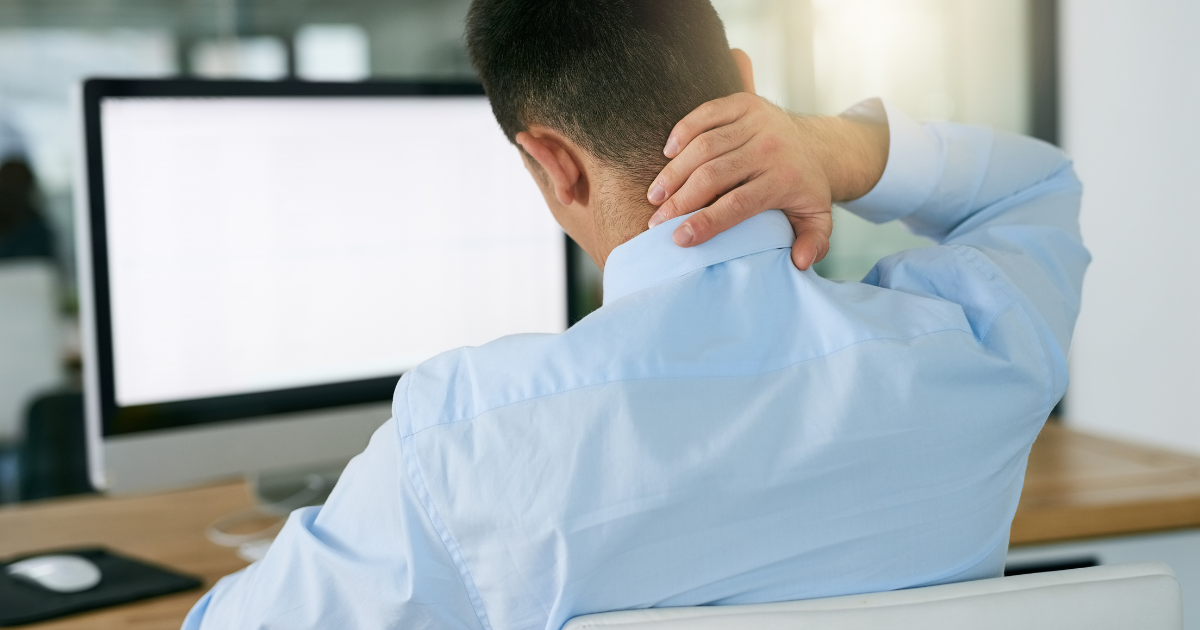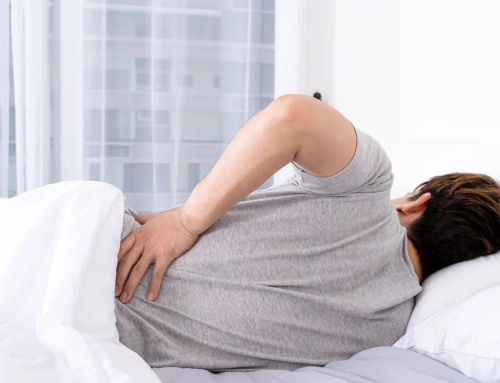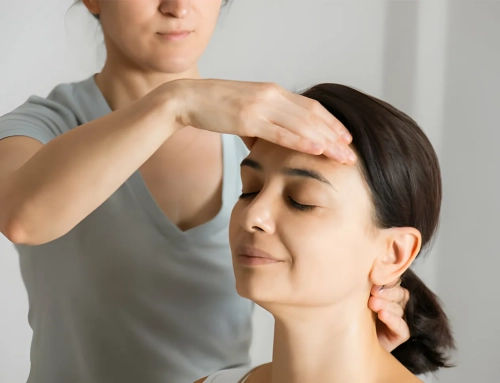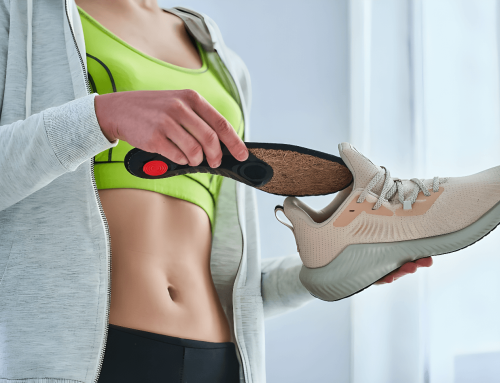Massage Therapy For Office Workers – Alleviating The Strains Of A Desk Job
In our modern sedentary age, it’s crucial to counteract the adverse effects prolonged sitting has on our bodies and minds. In this article, we will share our thoughts on how massage therapy can benefit office workers. We’ll explain the techniques, stress management strategies, and how regular massages can enhance productivity and mental health. We’ll also discuss the methods used by our team of massage therapists.
Key Takeaways for Massage Therapy
- It offers a drug-free way to address and alleviate the physical health issues caused by slouching, such as back pain, headaches, and poor circulation.
- It helps improve muscle, joint, and ligament health by releasing muscle tension and strain from prolonged sitting, and it also addresses issues like restricted breathing, weak core muscles, and inflexibility caused by poor posture.
- It can help correct posture by stretching muscles, releasing back tension, and improving spinal alignment.
- It is an effective stress management solution, targeting areas of built-up tension to provide mental and physical relief and improve overall well-being and productivity.
Physical Impact of Sedentariness
You’re often unaware of the subtle slouching or leaning that occurs throughout your day, but these slight deviations in posture can lead to significant discomfort over time. Trust us, we’ve seen it; hours spent stuck at your desk can wreak havoc on your body. The sedentary nature of office work leads to a host of physical complaints, which include poor circulation, back pain, and stiffness. Our bodies are not designed for prolonged desk-sitting. As office workers, we often ignore these signs until they escalate into chronic issues, but we truly feel massage therapy can help alleviate these strains.
So remember, while we serve others in our jobs, let’s also take time out for self-care through massage therapy.
Posture Correction Techniques

Massage therapists combat the effects of prolonged sitting and a sedentary lifestyle by employing posture correction techniques. Techniques may involve gentle stretching, kneading, or pressure application that not only corrects your posture but also relieves muscle tension.
Regularly using these methods can help maintain good spinal alignment even as you continue working at your desk. Remember, a healthier posture means a happier workday!
Stress Management Solutions
Let’s delve into the role of massage in managing stress, boosting productivity, and keeping us functional despite the strains of our desk jobs.
The Role of Massage Therapy in Stress Alleviation

Heavy workloads and arbitrary deadlines are a part of office life. This causes strain, both mentally and physically. Massage therapy is an effective, drug-free stress management strategy. Here’s why:
- Massage therapy specifically targets muscle groups affected by the strains of a desk job, bringing immediate relief and long-term stress management.
- It plays a pivotal role in stress alleviation by tapping into our body’s relaxation responses. It stimulates serotonin production, which promotes feelings of well-being and calmness.
- Regular sessions can help manage work-related stress levels effectively, preventing burnout.
Incorporating massage therapy into your routine helps with physical discomfort and keeps mental strain at bay. This way, we’re more focused, productive, and ready to serve others better.
Productivity and Mental Health
Are you stuck in a mental fog and productivity slump from your desk job? Massage therapy can be a game changer, offering physical relief and boosting clarity and focus.
When stress builds up, it’s hard to stay on task. However, with massage therapy as part of our routine, we’ll see productivity and mental health improvements.
As tension releases from our bodies during a massage session, so does the fog clouding our minds. We emerge not just physically rejuvenated but mentally sharper. Regular massages can help ward off work-related stress before it takes hold.
So let’s give ourselves the gift of improved health and productivity at work by incorporating massage therapy into our lives!
Massage Therapy at Clayton Heights Chiropractic

We understand how difficult it is to find time for self-care amidst long office hours. However, our practitioners work as a team to find the best possible route to getting you back to your everyday pain-free life. Proactive healthcare is important, and when you visit Clayton Heights Chiropractic, we will help you get better using the following techniques:
- Massage Therapy: this targets muscles, tendons, ligaments, and joints. This can increase circulation, reduce adhesions and scar tissue, reduce neural firing, enhance joint range of motion, and end the cycle of pain and tension.
- Stretches: this can help improve your range of motion and prevent muscle pulls or strains.
- Exercises: we recommend specific physical exercises that target muscle strains, including plans, push-ups or foam rollers. Exercises improve physical tension and mental clarity.
- Hydrotherapy: This method uses warm compresses to help relieve tension in muscles and joints.
Our goal is to get you back to optimal health and functioning through tailored combinations of massage, stretching, exercises and hydrotherapy.
Frequently Asked Questions
What specific types of massage therapy are most beneficial for office workers?
We’re big fans of deep tissue and Swedish massages for office workers. These techniques melt away tension knots, helping us to be more productive wherever we work. Whether it is Surrey, Cloverdale or Langley, feel better at your desk.
How often should an office worker receive a massage for optimal health benefits?
For optimal health benefits, we’d recommend office workers receive a massage every two to four weeks. Regular sessions help maintain muscle health, improve posture, and manage stress effectively for those with desk jobs.
Are there any contraindications or potential adverse effects of massage therapy for office workers?
Yes, while massage therapy offers many benefits, it’s not for everyone. Conditions like osteoporosis, deep vein thrombosis or recent surgery could make massage risky. Always consult with your healthcare provider first.
Can massage therapy help with carpal tunnel syndrome or other repetitive strain injuries common in office workers?
Absolutely, massage therapy can be a knight in shining armour for those battling carpal tunnel and other repetitive strain injuries. It enhances circulation, eases inflammation, and promotes healing by targeting affected muscles and tendons.
Is it possible to perform self-massage techniques at the desk to alleviate some of the strain?
Absolutely, we can use self-massage techniques at our desks to ease some strain. Techniques like neck rolls, shoulder shrugs, and hand stretches can help to alleviate tension associated with prolonged sitting or typing.
Conclusion

In the hustle of our daily grind, let’s remember to respect our bodies. The strains of desk jobs can weigh heavy on us, but massage therapy can be a game changer.
It doesn’t just chase away the physical pains; it also lifts mental clouds. So whether you’re in the Surrey or Langley area, remember – there’s relief within reach at Clayton Heights Chiropractic Clinic.
Let’s prioritize wellness and make room for massage therapy in our lives.






